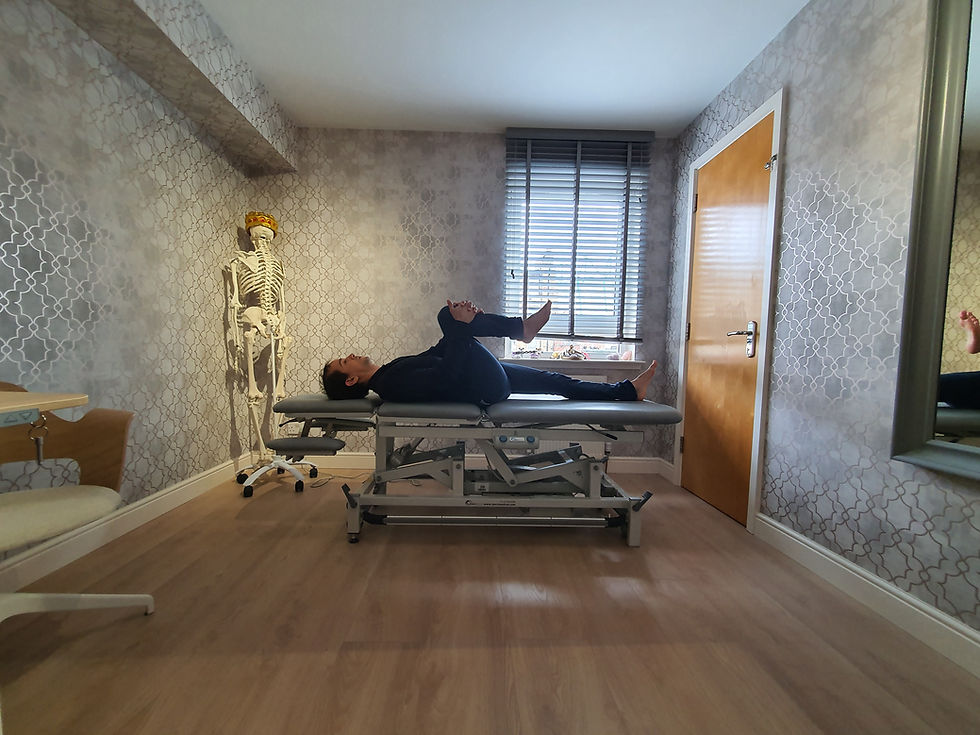“Sciatica” – A label that helps or a trap?
- Refael Mishanya
- 27 בדצמ׳ 2022
- זמן קריאה 3 דקות
I’ve had many patients who suffered from sciatica, most of them were a bit confused about what that means. Others had an idea, however not a very accurate one.
‘Sciatica’ is an umbrella term that describes symptoms along the innervation of the sciatic nerve. Those may include a combination of: pain, burning sensation, tingling, numbness or weakness.
It often involves sharp pain in the hip and leg area, and sometimes can include the buttocks and/or feet. Lower back is also a part of it, but can present with mild symptoms or no symptoms, so can be wrongly ignored by the patient.
Pain can be constant or fluctuating and can stay for a long time if not diagnosed and treated properly. It can also be referred pain from a muscle like piriformis or psoas.
It can resolve by itself in a few days or weeks in some cases. Or stay for a few months or years in others, where people are told to learn how to live with it.
I really don’t like the last sentence. Remember: being told you have ‘sciatica’ only describes your symptoms, not the pathology or cause behind it. It can happen for various reasons and some of them can be affected by you!
The sciatic nerve can be compressed, pressured, or impinged in different locations. It can happen in the spine - by a vertebra, disk or narrowing of the spinal canal. It can also happen in the hip joint if it sits away from a neutral position or by muscles along its route in the lower back or hip.
As a ground rule if the symptoms are changing with activity it is more likely to be of muscular origin. If the pain is more constant and changes less, it’s more likely that the origin is nerves. Both causes can act differently and will change a little bit with intensity and certain movements. For a more accurate diagnosis I would suggest seeing an osteopath.
Nerve symptoms and effects take longer to develop and to change, but they don’t have to be permanent. Muscles can be easier to have an impact on, but might hurt as bad as the nerve pain. Both causes can be treated by osteopathy and successful recovery depends on you implementing a few bits of advice below.
Depending on diagnosis, treatment will be different, but the rehabilitation phase will be similar.
If you suffer from lower back pain, or any of the symptoms mentioned above you should consider:
1) Stretching the hips, with emphasis on psoas and piriformis
- I will upload a video soon to show a few simple stretches but for now you can imitate the one I do in the picture (pic #1). Alternatively ask for more examples in the comments if it is urgent and I will try and help.
2) Stretching your lower back- this can be achieved by lying on your back and tilting your hip sideways and staying there for a few minutes (pic #2). Then do the other side. This will also stretch psoas if done correctly.
3) Keep moving slowly and gently as much as you can without aggravating the symptoms. It will help your body recover faster. If you constantly sit or lie down, you might cause more damage or tell you body to adjust to this new position. It can lead to harder rehabilitation process and longer recovery time.
4) When you are able, I would suggest to start doing small exercises to strengthen your core muscles. Start small from a few seconds planks and gradually build on that.
5) For pain – use heat and cold as I described in my previous Instagram
posts (1-4 minutes each, 3-4 times in a row, a few times a day).
Please let me know if you have any questions about this post or if you would like to know more on the subject.





תגובות